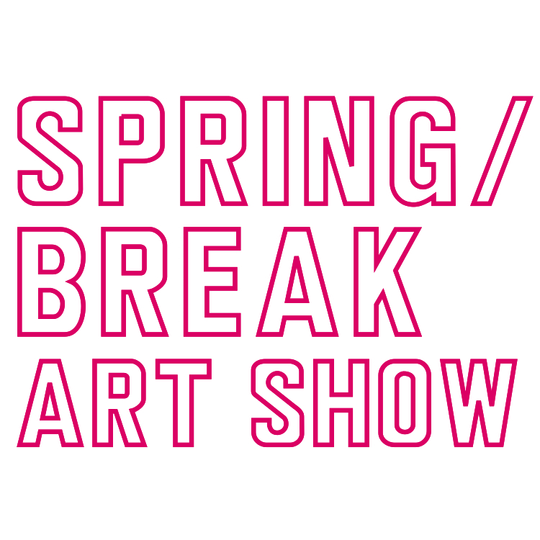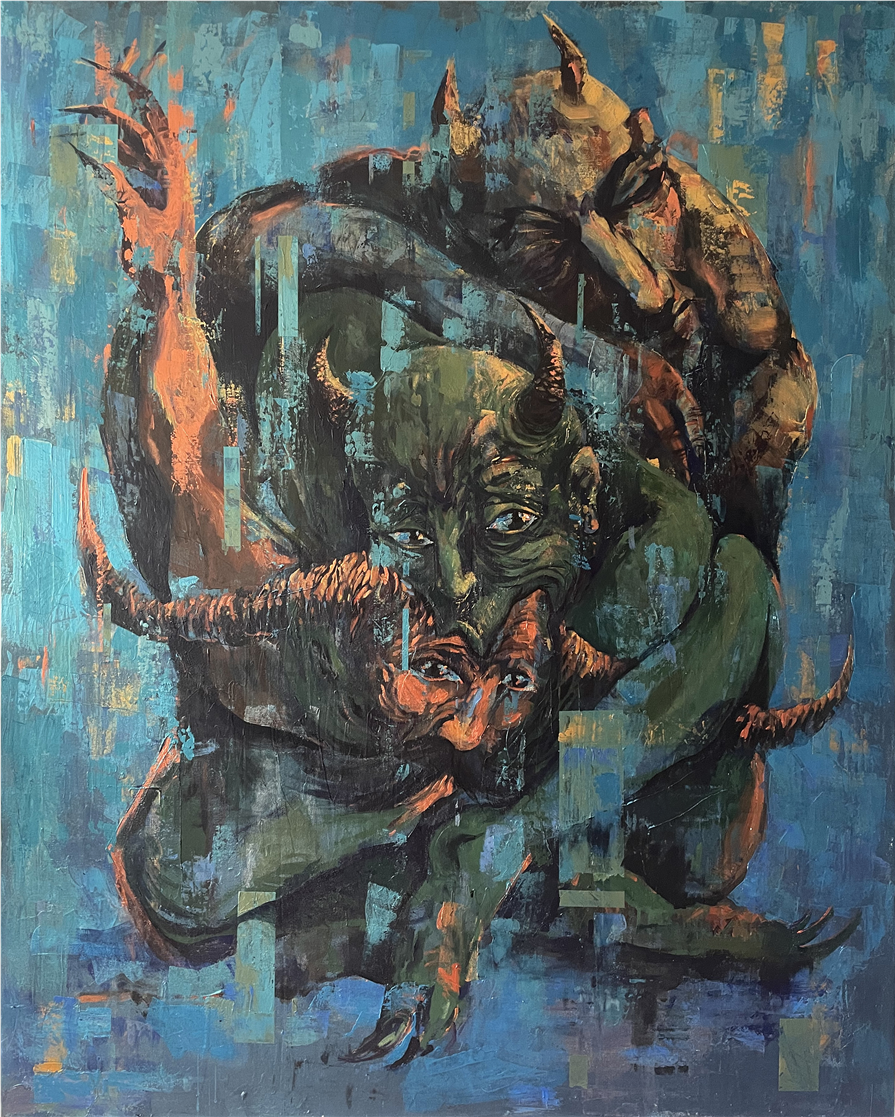SPRING/BREAK Art Show
September 06 - September 11, 2023
SPRING/BREAK Art Show is the curator-driven art fair in NYC and Los Angeles. SPRING/BREAK returns for its 12th edition in NYC in Fall 2023 for the 4th iteration at 625 Madison Avenue.
Collection // https://springbreakartfair.com
Hamzianpour and Kia in collaboration with the curatorial project led by Clio Yusto Giner and Jordan Doner.
Wild Card: HEARSAY: HERESY: “The Return of the Fool”
State sponsored religions and adherence to its orthodoxies, complete with banishment, public shaming, arrests, and “died by own hand in custody”. The fetishized violence towards non-believers already a cornerstone of public discourse. Here we go again.
The Joker/ Jolly has something of the mischievous, the carnival, the sybaritic. An interlocuter and agent of magic and the occult. An individual with egis, and personal security, who is role-playing. The fool has no persona, no costume, but rather a station, operating in a vastly different ecosystem; be funny or die, life, and a highly compromised art, performed at the boot and the whim of an erratic sovereign narcissist. We are backsliding from the age of the Jolly, to a new age of the fool.
For this year’s Spring Break art fair New York edition we are presenting a global view of this concept through the art of Fran Baena, Milad Aarmnia, and Jordan Doner. We present these artists whose practice deals in varying degrees with this suddenly “of the moment medievalism”, both in subject, articulation, and material, as well as with levity, and the occult.
The three artists collectively cover a personal foray between the visual practices of the medieval ecclesiastical spheres; Rome and the Germanic Tribes of the West, to Constantinople and Babylon. All three grapple with history, mythology, culture, identity and communication, reduced to a trajectory of geometrically self-replicating, enhanced, and increasingly fictitious, digital feeds and files.
Fran Bena’s art often draws inspiration from ancient Greek myths and medieval fairytales, evoking a time when heresy (personal choice and the audacity to maintain an individual cognitive process) had a positive connotation. Incorporating elements of medieval traditions, Baena's work pays homage to the craftsmanship, and skillset of that era, while simultaneously subverting and recontextualizing those conventions. Embedded within Baena's imagery is the influence of the post-Internet era, with its barrage of images, memes, and gifs. Far from consuming it’s allure at face-value, Baena harnesses and harvests the aura, it’s ostensible target referent, and the hyper-efficient “call-to-action” of these digital artifacts. Their likeness transposed, by executing, and referencing, a relatively loose, almost decorative period render, transposed into the allegorical, with a largely undefined proximity to each other and to the tropes of the practice. The effect, a space for narratives and an aesthetic divergent from the narrow functionality of their click-bait ecosystem origin. And there is plenty of deniability for the artist-fool who can always claim a decorative homage to the sanctified “trusted sources”.
By contrast, Doner pairs an ostensibly austere, artisan technique and religious allegory, with the incorporation of a disparate if not irreconcilable pallet from another pantheon and aesthetic entirely - late 20th century farce, glamour, cults, current 3D rendered gender-and-species-fluid manga, and the false history, false landscapes, false photography of lazy AI renders. Doner’s reference of Martin Schoenher’s Griffin, the magical hybrid beast and protectorate, is paired with the mischievous, and highly capable, gopher from Caddy Shack. There is a dark luminescent blue pastel on muted blue paper render of self-mutilated martyr Saint Lucie, from the open pages of Dali/ David Bailey/ Amanda Lear’s 1971 collaboration in Paris VOGUE. A bit of alchemy with the macabre tale rendered chic and ephemeral and then returned to the austere. A study of Schoenher’s Friar rendered in late-medieval staple Caput Mortuum pastel pigment, with the added inscription, “mediae aetatis clerici persuadent iuveni masculum exemplar calvitium est vultus”. (middle-aged clergy convincing youth that male-pattern baldness is a look). The uncredited Italian old master drawing of two smug young aristocrats, now fused with a smug young (and released this week) Mason family killer Leslie Van Houten. A comedic cognitive dissonance of elements that is a perfect for a culture that is lurching towards orthodoxy.
Extending the conjuring if Medieval practice Eastward, Milad Aramnia’s work is steeped in the Babylonian heritage and Persian myth his father read him in childhood. As well as the monsters and mythology of contemporary gaming. Aramnia’s practice touches on the deev (beast) and deevoonegi (insanity), a term made up by the artist roughly translating to beastlies – that is, beasts insanely in love rather than cruel or coarse. The term deev is drawn directly from Persian mythology as beastly creatures existing alongside jinn (genies), peri (fairies), and shayatin (devils). The deev is unique as a beast in that they are shy, innocent creatures whose trust was often broken by heroes and protagonists, causing the deev to become violent. They are melancholic creatures deeply tied to humans, portrayed as villains, but are more accurately anti-heroes. Primary colors collide vividly with secondary colors while gold and metallics illuminate the painting surface. The use of surface reflection gives a feeling of early Eastern Orthodox icon paintings and Iranian miniature paintings on paper.

